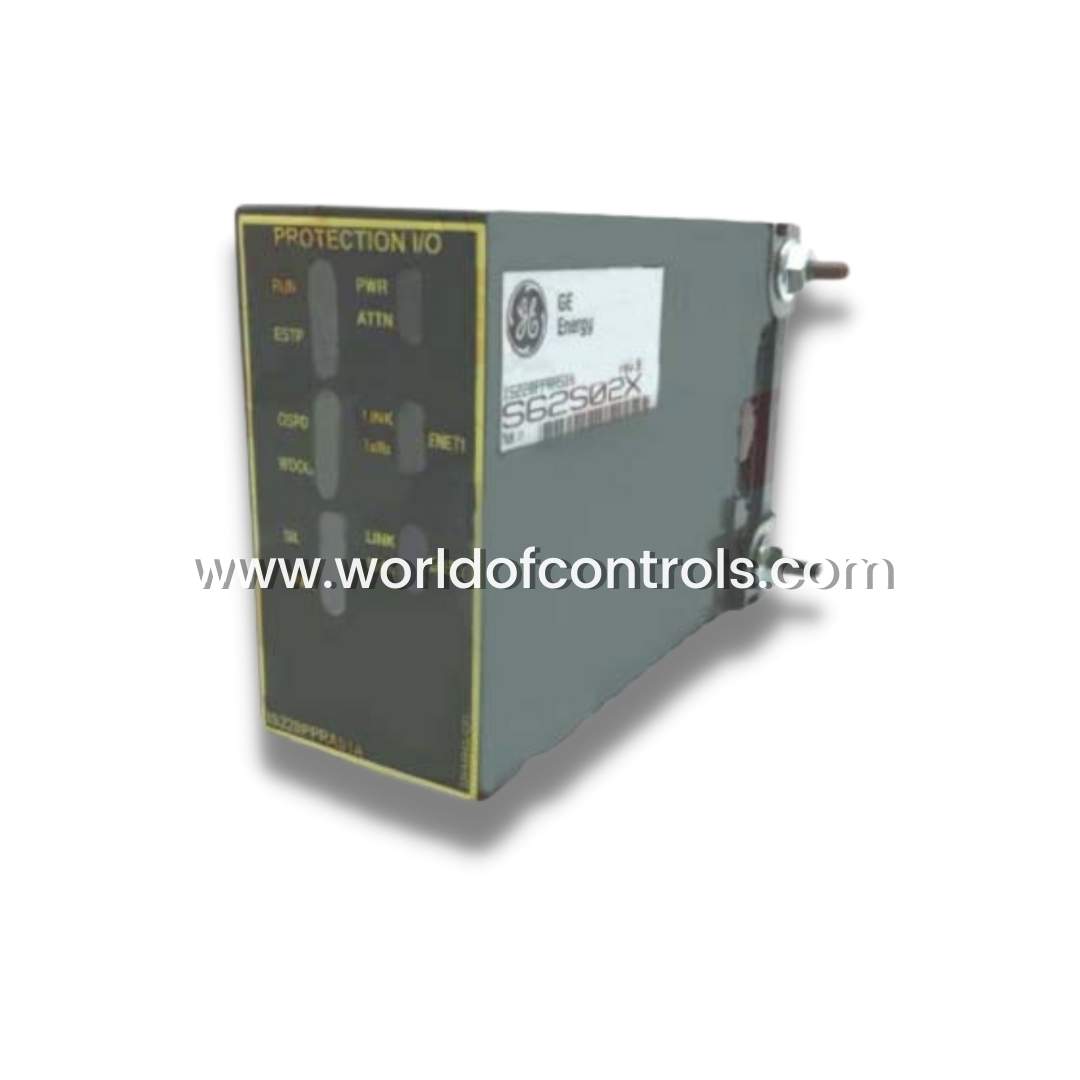
World Of Controls understands the criticality of your requirement and works towards reducing the lead time as much as possible.
IS220PRAS1A - Protection Input/Output Module is available in stock which ships the same day.
IS220PRAS1A - Protection Input/Output Module comes in UNUSED as well as REBUILT condition.
To avail our best deals for IS220PRAS1A - Protection Input/Output Module, contact us and we will get back to you within 24 hours.
SPECIFICATIONS:
Part Number: IS220PRAS1A
Manufacturer: General Electric
Series: Mark VIe
Product Type: Protection Input/Output Module
Input Channels: 8
Solenoid Rated Voltage/Current: 125 V dc
Operating temperature: -10°C to 60°C
Humidity: 5% to 95%
Solenoid Response Time: L/R time
Current Suppression: Metal oxide varistor
Control Relay Coil Voltage Supply: 28 V
Flame Detector Supply Voltage/Current: 335 V dc
Dimensions (L x W x H): 130 mm x 100 mm x 60 mm
Weight: 0.5 kg
Availability: In Stock
Country of Origin: United States
FUNCTIONAL DESCRIPTION:
IS220PRAS1A is a Protection Input/Output Module manufactured and designed by General Electric as part of the Mark VIe Series used in GE Distributed Control Systems. These modules act as the bridge between field sensors and actuators, ensuring operational safety and reliability by responding to abnormal conditions in real-time. They are commonly used in industries like power generation, oil and gas, and manufacturing, where uninterrupted operation and safety are paramount. At their core, Protection I/O Modules process input signals from various sensors that monitor key parameters such as temperature, pressure, vibration, and electrical currents. Based on the configured thresholds, the module can send control commands to actuators or trigger alarms to mitigate potential hazards. For instance, in a turbine protection system, these modules can detect overspeed or excessive vibration and immediately initiate a shutdown to prevent damage.
FUNCTIONS OF PROTECTION I/O MODULE:
WOC has the largest stock of GE Distributed Control System Replacement Parts. We can also repair your faulty boards. We can also supply unused and rebuilt backed-up with a warranty. Our team of experts is available round the clock to support your OEM needs. Our team of experts at WOC is happy to assist you with any of your automation requirements. For pricing and availability on any parts and repairs, kindly get in touch with our team by phone or email.
How does signal isolation work in Protection I/O Modules?
Signal isolation is implemented to protect the control system and other sensitive components from electrical disturbances such as voltage spikes or ground loops. Protection I/O Modules achieve this by using optocouplers, transformers, or isolation amplifiers between the input/output circuits and the processing electronics.
What are the response times for Protection I/O Modules?
The response time for Protection I/O Modules varies depending on the system’s design and the type of fault being detected. In general, these modules are designed for high-speed response, with typical times ranging from milliseconds to seconds.
What is signal isolation in Protection I/O Modules?
Signal isolation refers to the separation of input signals from the control system to protect sensitive components from electrical noise, surges, or faults. It ensures that external disturbances don’t affect the operation of the control system, improving reliability and data accuracy.